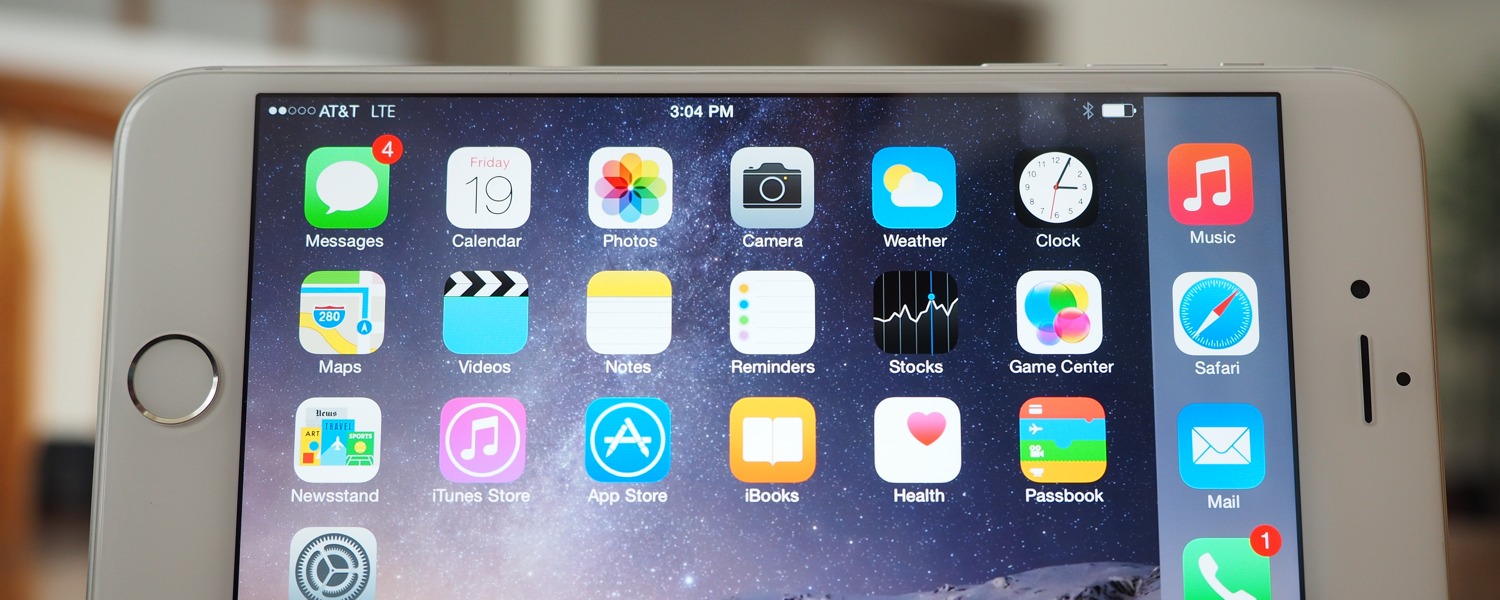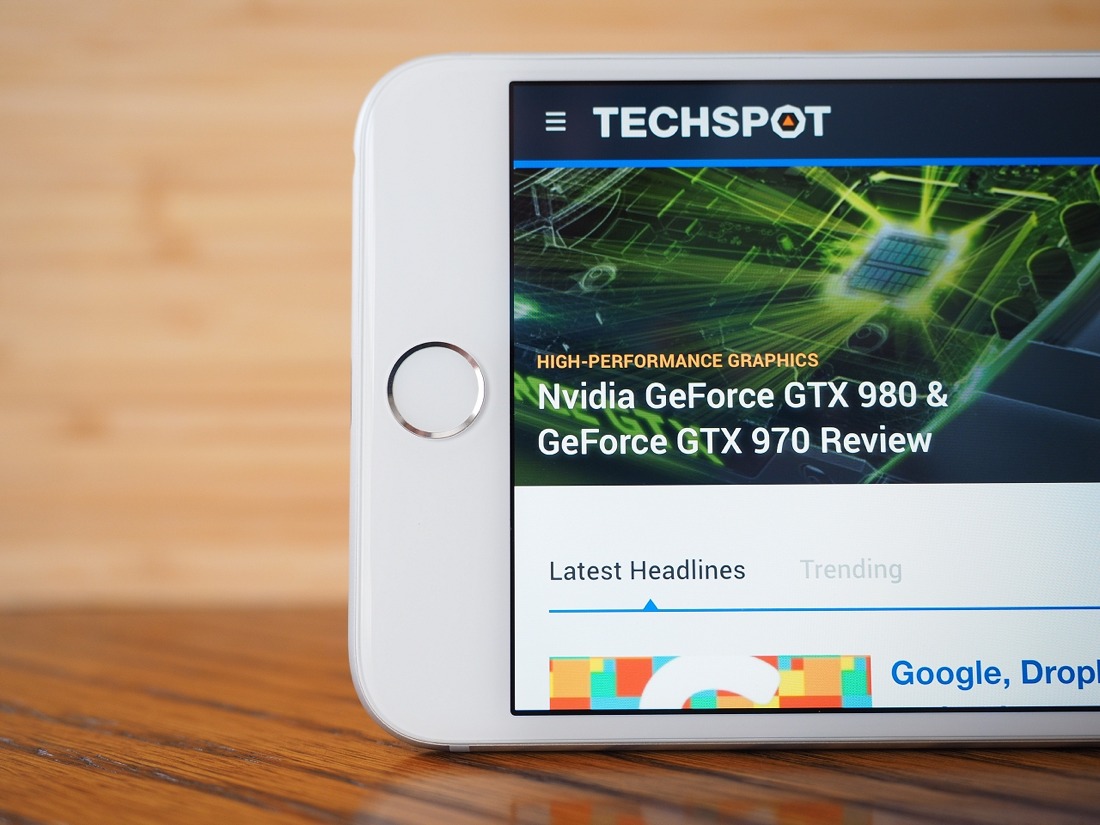Wrap Up: Apple's Best iPhone Yet
I've been using the iPhone 6 Plus as my primary mobile device since picking it up on launch day. That has given me about a full week of hands-on time to form opinions and draw conclusions on a number of different areas. With the iPhone 6 Plus, and the iPhone 6 to a lesser degree, Apple has finally given its legion of fans exactly what they wanted.
The rounded corners of the aluminum rear shell feel great in the hand, but I'm having a hard time looking past the camera that sticks out like a sore thumb. I realize it was necessary in order to make the phone as thin as possible but it still looks out of place and feels prone to damage. Even though Apple stands by its decision today, I wouldn't be surprised if they go back to a flush camera on the next iteration a year from now and make a great deal of it.
The rounded edges also mean I can no longer rest the iPhone on its side, something I've done in the past when watching videos or snapping photos / video clips. It's a minor inconvenience but one that I'm willing to put up with in favor of the larger screen and optical image stabilization.
While I feel Apple missed the mark with the rear camera, they absolutely nailed the front of the new iPhones. The tapered edges of the front panel glass, while very subtle, look absolutely stunning in person. Moreover, opting for a true 1080p HD display instead of something smaller or larger was also the perfect choice. The pixel density is high enough that you can't make out individual pixels without posing a detriment to GPU performance and battery life.
Deciding between the iPhone 6 and iPhone 6 Plus will ultimately come down to personal preference. While my hands are on the smaller side, I have no trouble using the 5.5-inch display on the larger phone. I haven't had any near-drop incidents with the phone over the past week but then again, I'm not foolish enough to try and do everything one-handed.
Those that do wish to one-hand the iPhone 6 Plus might find Apple's Reachability feature useful. By double-tapping (not pressing) the Home button, you can slide the top half of the screen down to the bottom half to bring it within reach. I found it to be more of a gimmick than anything. Once you follow a link on a webpage, for example, the screen returns to its original position.
I simply treat the iPhone 6 Plus as a small tablet and use it with both hands. The only time I use a single hand is when it's lying on my desk.
Battery life is always a critical part of any smartphone review but given the time constraints to get this review out in a timely manner, I simply didn't have enough time to run our usual gamut of tests. Instead, I can offer anecdotal commentary of my experience thus far and even then my numbers are likely skewed as I've been testing the phone extensively all week.
That said, what I have found is that the phone is capable of making it through a full day of heavy use and will last longer than an iPhone 5s. Additionally, I've observed that using the display at full brightness is the quickest way to drain the battery (such was the case when I was snapping photos of the phone for this review). I suspect one could perhaps even make it two full days with normal use at 50 percent or lower screen brightness.
I plan to run our official battery tests on the iPhone 6 Plus in the coming days and update this review with those findings at that time. It will also serve as comparison metrics for when we review the Galaxy Note 4 and other competing devices.
Performance from the A8 was never called into question. The chip is easily able to drive the HD screen as well as OS animations and transitions. It may only have a dual-core chip with 1GB of RAM but the iPhone 6 Plus performs on par with the best Android phones out there.
I've yet to touch on Apple's claims that the iPhone 6 Plus boasts faster Wi-Fi and LTE capabilities primarily because I haven't been able to test either aspect just yet. My home broadband connection is pretty slow and I don't get great LTE reception either. Again, once I get a chance to test these appropriately, I'll come back and update the review with the results.
While the iPhone 6 Plus does have NFC capabilities, it's worth pointing out that Apple is restricting it to Apple Pay only for the time being. Apple has likely spent a considerable amount of time and money securing partnerships for its upcoming mobile payments system and wouldn't want to somehow screw it up before it's tested in the market.
Some other random observations: the speakerphone is much louder than before, the audio quality and loudness when playing music sounds identical compared to the iPhone 5s, and the new vibrating motor is much more potent and loud than the one in the 5s. This could be problematic when you have the phone set to silent as the motor is very audible when activated.
Outside of the protruding camera lens, my biggest complaint with the iPhone 6 Plus is the lack of app optimization thus far. Most apps have to scale their graphics to fit the higher resolution / larger phone resulting in an unattractive appearance. Buttons are way too big, text is blurry and images aren't sharp. Fortunately, this is something that can and will be fixed in due time as developers get around to updating their apps.
Reactions to the iPhone 6 Plus have been largely mixed. While most people comment on how large it is, others praised Apple for finally making a big phone. One person I showed it to said it looked "just like a Galaxy phone."
Based on these reactions, I'd be curious to know which of the two phones is the most sought after. Current shipping dates on Apple's website suggest the 6 Plus is in high demand, with considerable longer wait time versus the standard 6, but this could be explained by other factors like manufacturing speed and pre-launch forecasts.
Wrap Up
Apple has built its reputation on innovation and when Steve Jobs passed, many questioned whether or not they would be able to continue to innovate at the level they did when he was at the helm. There was even the rumor suggesting Jobs had left Apple with a roadmap of products to get them through the next couple of years.
While we can't tell whether or not that's true, it certainly seems plausible when you take a look at the design of the last two iPhones versus this year's models. The iPhone 6 and iPhone 6 Plus have undergone a complete redesign and perhaps represent the first iPhone to come out of Apple without any influence from its co-founder.
With that lead-in, I think it's safe to say there's nothing really innovative about the iPhone 6 and iPhone 6 Plus unless you count Apple Pay, which doesn't even work yet – and relies on NFC technology that other phones had before. With the iPhone 5s, Apple was first to produce a 64-bit mobile chip and a fingerprint scanner that was nearly flawless. Before that, Apple delivered the first high-quality screen with its Retina Display and even popularized the third-party app market.
This time around, Apple is playing catch-up in many respects and I guess that's alright.
Apple's philosophy is not to be the first but to be the best. Could the company have delivered a larger iPhone last year, or even the year before? Absolutely. But they didn't and it has proven to be a wise business decision. By holding out at long as possible, Apple has all but guaranteed that demand for their new phones will be through the roof.
Before evaluating whether or not the iPhone 6 Plus is a worthy successor to the 5s, it's worth discussing Apple's new pricing scheme for a moment. While the base 16GB models still remain, the company has eliminated the 32GB storage option from its new phones.
What's more, they ommited a budget model of their latest flagship in favor of a new four-tier lineup that keeps the iPhone 6 at the standard $200 price point with a two-year commitment, and the iPhone 6 Plus for $100 more. It's a sly move because most people will simply think of them as the "normal" and "premium" iPhones. The iPhone 5s continues to be available at $100 with a two year contract and the 8GB iPhone 5c will be free under the same arrangement.
Apple is now locked into the large-screen smartphone market with the iPhone 6 Plus. And unlike with the arguably failed iPhone 5c, it seems very unlikely that the company would backtrack next year and not offer another phablet-sized phone.
All things considered, the iPhone 6 Plus is a great phone if you want a smartphone with a large screen that offers some tablet-like functionality under Apple's ecosystem. The screen is gorgeous, there's more than enough power on tap, the camera is among the top in its class and the phone is ridiculously thin. While there are a few design aspects I don't agree with, the iPhone 6 Plus is otherwise a great phone.
For those that have never used a smartphone with a large screen, I would encourage you to try one out in person before buying. It is a lot larger than the iPhone 5s and will no doubt be too big for some. I've already heard of a few size remorse stories around the web.
If you are already happy with the size of your iPhone 5s, then no, the iPhone 6 Plus isn't really worth your money as you are mostly just paying for a larger screen and the standard 6 may be more your cup of tea.
Given the sheer number of great smartphones on the market today, it's hard to label any one device as the absolute best but I can say with confidence that the iPhone 6 Plus is the best iPhone Apple has released to date. Innovation may indeed be an issue for the iPhone moving forward, but then again, I'm not entirely convinced that the smartphone industry as a whole hasn't plateaued.
Apple sold more than 10 million new iPhones during its opening weekend and that was without launching in China. As long as inventory can keep up with demand, I suspect they'll shatter all sorts of sales records this holiday season. Back up the Brinks truck because Apple is about to bring home a ton of money in the coming months.
Pros: Beautiful, bright and color-accurate HD display. A8 SoC performs on par or faster than competing chips. Improvements to the camera hardware and battery life. Finally makes iOS an option for anyone interested in a phablet. Thin body and the tapered edges of the front panel glass look stunning.
Cons: Protruding camera lens takes away from the overall design. Few iOS apps are optimized for the new form factor (though this will change over time). Price – Apple added a new 'premium' tier to the iPhone lineup.






